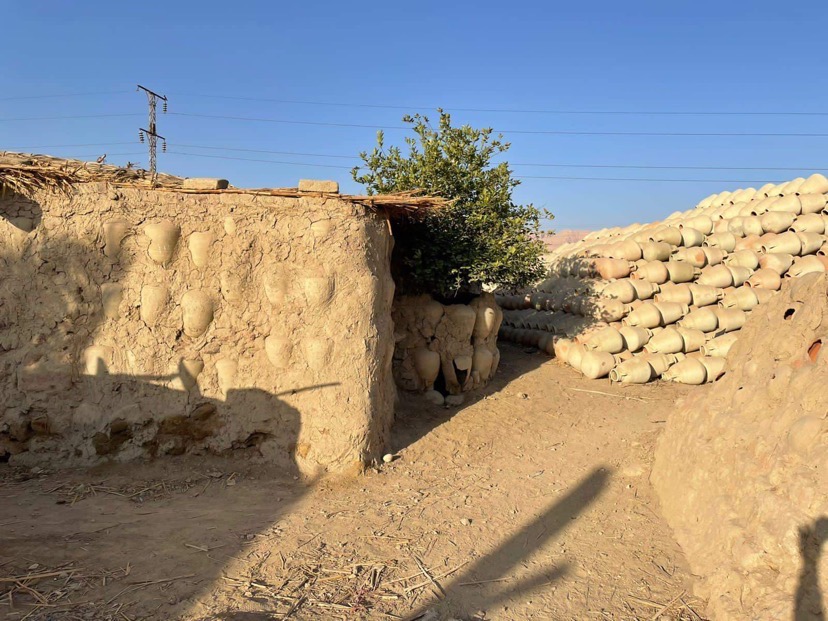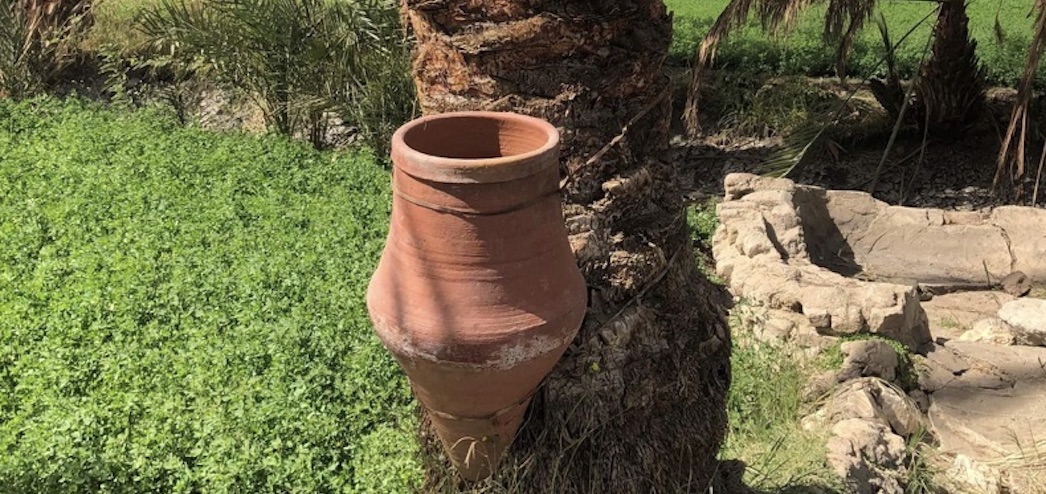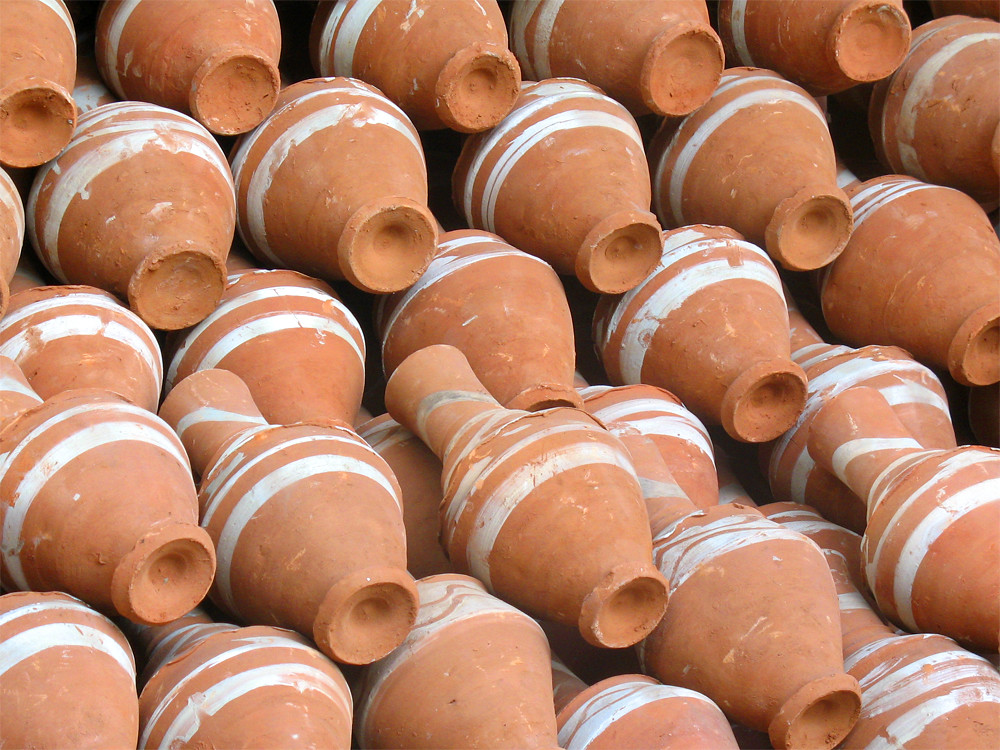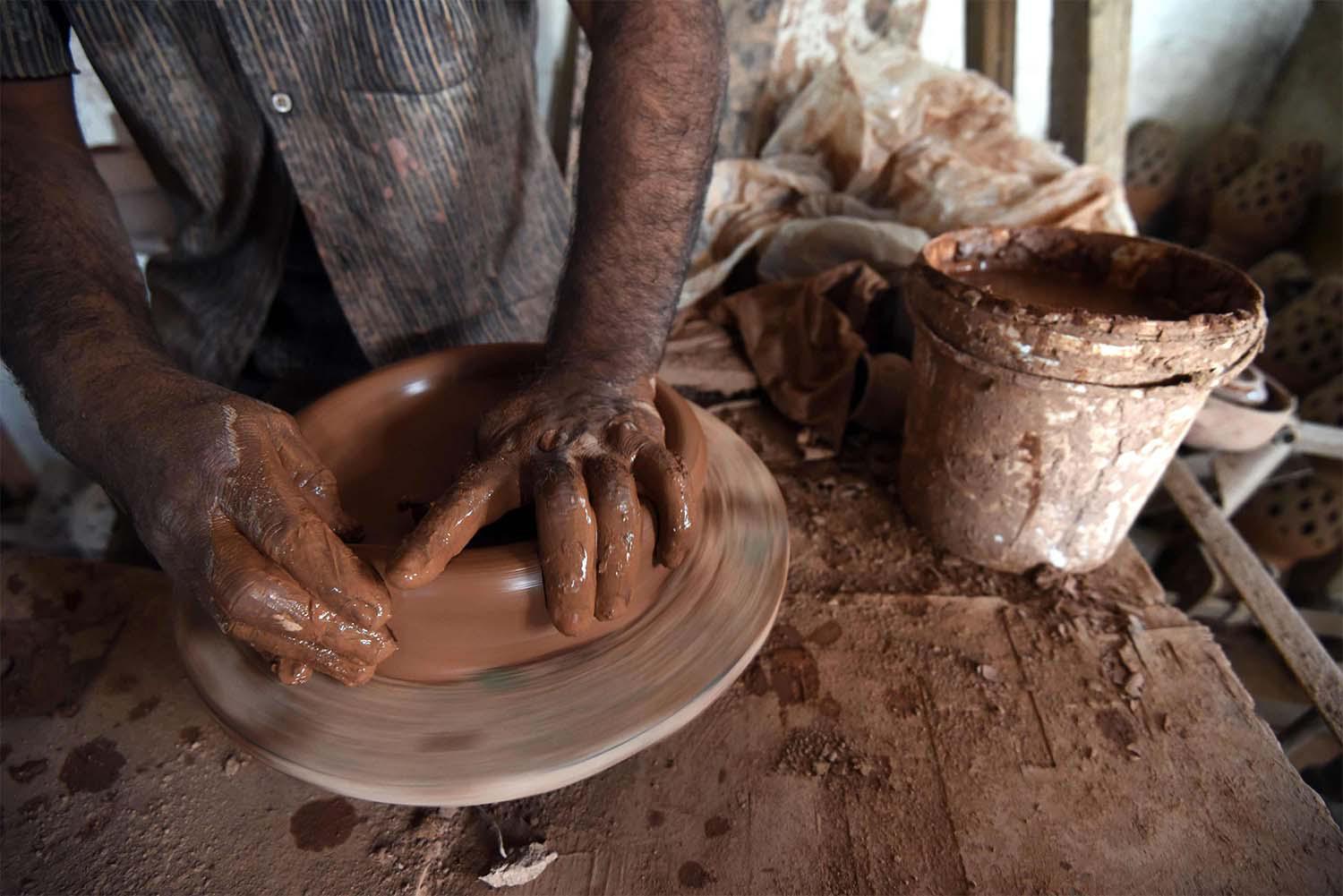“Pottery was literally a multidimensional cultural container that contained several aspects of the thoughts, beliefs, relationships, rituals, practices, and lifestyles of the ancient Egyptians,” reads a 2020 Egyptian study on the craft in the ancient world.
In a rushed world focused on immediacy and speed, a potter’s work relies on a rare virtue: patience. An art of simple pleasure, pottery is formed when clay and patience coalesce. In pottery making, no two pots are ever the same. Stories are told through the cracks in the clay, its shape that morphs as hands cup together, and the pieces of ourselves that we impart into its making. Home to a wide range of different arts, pottery is one of Egypt’s ancient arts.

Masters in all things art, ancient Egyptians excelled at pottery. This clay pot is an artifact from ancient Egypt. It even emerged during the predynastic period, the earliest period in recorded Egyptian history. Pottery was already being created during what is known as the Naqada II period (3500-3200 BCE), long before the pyramids were built. Later on, tomb scenes, particularly in Upper Egypt, depicted the main stages of pottery in ancient Egypt.
Crash Course: Early Pottery Days
Egyptian history saw the transformative nature of the art of pottery as each era had different processes of making, new materials, distinct styles, forms, and colors. Each period, each site, could have its distinct style.
In order to properly classify pottery in Egypt, a special system, the ‘Vienna System,’ was set in place. The Vienna System’s aim is to provide a means for Egyptologists working anywhere in Egypt to understand each other’s pottery finds. In the 2020 journal article, ‘Ancient Egyptian pottery in The Oxford Handbook of Egyptology,’ author Bettina Bader explains the essence of the Vienna System:
“This system, based on pottery mainly from the Middle Kingdom and the Second Intermediate Period, was meant to provide a general framework that could be utilized at any site and for various periods, with the inbuilt intention of extending and elaborating it as the ceramicist at a given site would see fit,” she concludes.
Originally, pottery was not regulated through workshops or the state economy. It later became as such during dynastic Egypt. Noticing a variation, famed Egyptologist Petrie noted that pottery in ancient Egypt was originally made for functional reasons rather than decorative purposes. It was a valuable commodity extant in the Old Kingdom. Patron and client relationships were reinforced through the exchange of pottery labor.
The ancient art can be divided into two categories, Nile Clay pottery, and Marl Clay pottery. Nile clay pottery, also known as the Nile silt ware, is the most common vein of pottery. This vein of pottery has a red-brown color that is produced after being fired and was commonly used for utilitarian purposes. The Marl clay, on the other hand, is usually polished to give a lustrous look.
Alfred Lucas was the first to write a treatise on the raw materials of ancient Egyptian ceramics in his book Materials and Industries in Ancient Egypt in 1948. He recognized two primary types of pottery clays, employed by both ancient and modern Egyptians.

Earlier pottery vessels were decorated with geometrical designs or simple motifs of waves, figurines. The clays were said to be obtained from lime-rich stream deposits of the desert wadis at Qena and nearby Ballas, as well as in the area of Sohag. The light color of these clays, when fired, was attributed to the absence of organic matter and the abundance of carbonates. The second basic type of pottery clay is the Nile mud, which is rich in organic materials and when fired, turned to a red or brown color.
The Potter and the Clay
An excerpt from the book Arts and Decorates indicates that, “the fine and easily workable clay formed by the Nile mud was perhaps an early inducement to the Egyptians to perfect the methods of pottery making.”
Predynastic pottery was of fine quality. During the Badarian period, pottery was produced without the use of a pottery wheel. Experts have concluded that other than the wheel, there are two methods to prepare vessels: the coil and smoothen technique as well as placing mud in a hole and smoothing the surface. Once prepared, the vessels were then burnished into a lustrous finish and fired in kilns, leaving a black upper section and lower, deep red, or brown section. It is worth noting that in most of Egypt, the master-potter is always a man, except in Nubia. In the 1985 journal article ‘Pottery Making in Upper Egypt: An Ethnoarchaeological Study,’ the lack of involvement of women in pottery was explained,
“Although the women work in the fields, it is unheard of for a woman to be involved in the potting industry, the work was too hard for them.”
However, throughout the rest of the country, if women were to take part in the pottery work, they would be confined to the burnishing and decorating duties.
While the role of men and women differed in the pottery-making process, the most important element for a potter was the type of clay he used in his work.
The potter’s vision for his piece’s design and usage affect the kind of clay used. The types of clay are classified into four main categories; earthenware clay, stoneware clay, ball clay, and porcelain clay.

The earthenware clay is the most commonly used, mainly for sculpting, hand-building, and wheel throwing. The colors of earthenware are warm, the wet clay has red, brown, and orange tones. They are also easily decorated with paints and glazes. Ball clays are mainly used for floor tiles, vases, kiln furniture, and tableware due to their high plastic infusion and high binding quality. The stoneware clay is slightly more expensive and is usually popular in tableware manufacturing, sculpt pieces, and bathroom fixtures. Lastly, porcelain clay is more industrial and often characterized by its bright white color. This type of clay is mainly used in tableware and other decorative objects.
A Glimpse of Modern-Day Pottery
A cornerstone of pottery-making in Egypt, the “Olla,” is a distinctive product of Egyptian pottery workshops. The Olla, a bottle-like jug, is made of clay and traditionally used for cooling and drinking water. The clay is fired at a low temperature and isn’t glazed, hence, water evaporates from the jugs, and keeps the water temperature cool throughout.

There are similar products to the Olla, such as the Tagen, which is a cooking pot used in Egyptian meals, and desserts such as Roz Mee’amar (rice cooked in milk and cream) and Om Ali. The Qasreya is als0 modeled after the Olla and is usually used by gardeners as plant pots.
The production of modern-day pottery is distinct because the ceramic cycle can be observed and recorded. Potters can be asked questions about raw materials, design techniques, and manufacturing choices. Since its early days, pottery has changed drastically. The biggest change is evident in the electric tools used in pottery. The kiln industry has developed electronic programmers that are able to control the temperature and power of the kiln. Another drastic innovation in the pottery industry is the machine automation of the manufacturing facilities, where human power has been reduced and machine automation has increased.
As a landmark in the evolution of humanity, pottery played an imperative role in uncovering the varying aspects of archeological studies. The chronology, ethnicity, trade, design, social complexities, gender inclusivity, cultural resonance, beliefs, and technological advancements; pottery tells stories of a bygone past and the innovative future.






Comments (2)
[…] Egypt, pottery has been a flourishing art since ancient times. Ancient Egyptians were gifted craftsmen and […]
[…] Egypt, pottery has been a flourishing art since ancient times. Ancient Egyptians were gifted craftsmen and […]